• 5.4-liter supercharged inline eight-cylinder • Four-speed manual transmission • Servo-assisted hydraulic brakes • Delightful patina • Two long-term owners • One of 83 540K Cabriolet 'A' built Together with its predecessor the 500K, the magnificent Mercedes-Benz 540K was arguably the most noteworthy production model offered by the Stuttgart firm during the 1930s. A development of the 500K, whose independently suspended chassis it shared, the 540K was powered by a 5.4-liter supercharged straight-eight engine. The 540K was one of the first models developed under Mercedes' new chief engineer, ex-racing driver Max Sailer, successor to Hans Nibel, who had died in November 1934 at only 54 years old. It featured the company's famous Roots-type supercharger system in which pressing the accelerator pedal to the end of its travel would simultaneously engage the compressor and close off the alternative atmospheric intake to the carburetor. This system had been thoroughly proven on the preceding series of Dr Porsche-conceived S-Type cars, and in effect the 540K was the last supercharged production Mercedes until relatively recent times. Launched at the Paris Salon in October 1936, the 540K had an engine that developed 115bhp un-supercharged or 180bhp with the compressor engaged. The gearbox was a four-speed, but with a direct top gear rather than the overdrive ratio used on the earlier 500K. With the supercharger engaged, the 540K's blown straight-eight gave it a top speed approaching 110mph (177km/h) matched by servo-assisted hydraulic braking. Its performance potential was such that Mercedes-Benz in the UK retained racing driver Goffredo 'Freddy' Zehender as technical adviser and demonstration driver, since the supercharged Mercedes was one of the few genuine 100mph road cars available in the 1930s. Tested by Britain's Motor magazine, the 540K was deemed to have lighter steering and handling than its 500K predecessor, plus an even more comfortable ride, even though the same all-round independent suspension layout with parallel links and coil springs at the front and swing axles at the rear was retained. The Motor's test car returned 102mph over the timed quarter-mile with the supercharger engaged and 85mph with it disengaged. Such performance was achieved at the cost of 11mpg petrol consumption, but the servo-assisted brakes came in for fulsome praise, the blower was found to be relatively quiet, and the steering and handling also compared favorably with the 500K. In May 1938, the 540K was tested by Motor's rival magazine Autocar and achieved the highest maximum speed of any road-test car up to that date: carrying three passengers, the car reached 104.65 mph (168.5km/h) on the race circuit at Brooklands, Surrey. "One's foot goes hard down, and an almost demoniacal howl comes in," reported test driver H. S. Linfield. "The rev counter and speedometer needles leap round their dials: there is perhaps no other car noise in the world so distinctive as that produced by the Mercedes supercharger." Late in 1938, a revised 540K made its appearance, with oval-section chassis tubes instead of channel frame members, while the adoption of sodium-cooled valves followed the company's highly successful racing practice. Although the 500K/540K chassis attracted the attention of many of the better quality bespoke coachbuilders of the day, Mercedes' own Sindelfingen coachwork left little room for improvement. The cabriolet came in a variety of styles. This example has the Cabriolet 'A' option with two-door, 2+1 seater coachwork and is outstandingly handsome, boasting wire wheels, twin side-mounted spares, exposed landau irons, twin horns and a center spotlight. The work of the gifted Hermann Ahrens, design chief at Sindelfingen, the Cabriolet 'A' offered elegant all weather touring allied to breathtaking performance. Daimler-Benz's order number 262498 was supplied with this car, chassis number 169396. It was one of at least two cars in this series delivere
• 5.4-liter supercharged inline eight-cylinder • Four-speed manual transmission • Servo-assisted hydraulic brakes • Delightful patina • Two long-term owners • One of 83 540K Cabriolet 'A' built Together with its predecessor the 500K, the magnificent Mercedes-Benz 540K was arguably the most noteworthy production model offered by the Stuttgart firm during the 1930s. A development of the 500K, whose independently suspended chassis it shared, the 540K was powered by a 5.4-liter supercharged straight-eight engine. The 540K was one of the first models developed under Mercedes' new chief engineer, ex-racing driver Max Sailer, successor to Hans Nibel, who had died in November 1934 at only 54 years old. It featured the company's famous Roots-type supercharger system in which pressing the accelerator pedal to the end of its travel would simultaneously engage the compressor and close off the alternative atmospheric intake to the carburetor. This system had been thoroughly proven on the preceding series of Dr Porsche-conceived S-Type cars, and in effect the 540K was the last supercharged production Mercedes until relatively recent times. Launched at the Paris Salon in October 1936, the 540K had an engine that developed 115bhp un-supercharged or 180bhp with the compressor engaged. The gearbox was a four-speed, but with a direct top gear rather than the overdrive ratio used on the earlier 500K. With the supercharger engaged, the 540K's blown straight-eight gave it a top speed approaching 110mph (177km/h) matched by servo-assisted hydraulic braking. Its performance potential was such that Mercedes-Benz in the UK retained racing driver Goffredo 'Freddy' Zehender as technical adviser and demonstration driver, since the supercharged Mercedes was one of the few genuine 100mph road cars available in the 1930s. Tested by Britain's Motor magazine, the 540K was deemed to have lighter steering and handling than its 500K predecessor, plus an even more comfortable ride, even though the same all-round independent suspension layout with parallel links and coil springs at the front and swing axles at the rear was retained. The Motor's test car returned 102mph over the timed quarter-mile with the supercharger engaged and 85mph with it disengaged. Such performance was achieved at the cost of 11mpg petrol consumption, but the servo-assisted brakes came in for fulsome praise, the blower was found to be relatively quiet, and the steering and handling also compared favorably with the 500K. In May 1938, the 540K was tested by Motor's rival magazine Autocar and achieved the highest maximum speed of any road-test car up to that date: carrying three passengers, the car reached 104.65 mph (168.5km/h) on the race circuit at Brooklands, Surrey. "One's foot goes hard down, and an almost demoniacal howl comes in," reported test driver H. S. Linfield. "The rev counter and speedometer needles leap round their dials: there is perhaps no other car noise in the world so distinctive as that produced by the Mercedes supercharger." Late in 1938, a revised 540K made its appearance, with oval-section chassis tubes instead of channel frame members, while the adoption of sodium-cooled valves followed the company's highly successful racing practice. Although the 500K/540K chassis attracted the attention of many of the better quality bespoke coachbuilders of the day, Mercedes' own Sindelfingen coachwork left little room for improvement. The cabriolet came in a variety of styles. This example has the Cabriolet 'A' option with two-door, 2+1 seater coachwork and is outstandingly handsome, boasting wire wheels, twin side-mounted spares, exposed landau irons, twin horns and a center spotlight. The work of the gifted Hermann Ahrens, design chief at Sindelfingen, the Cabriolet 'A' offered elegant all weather touring allied to breathtaking performance. Daimler-Benz's order number 262498 was supplied with this car, chassis number 169396. It was one of at least two cars in this series delivere
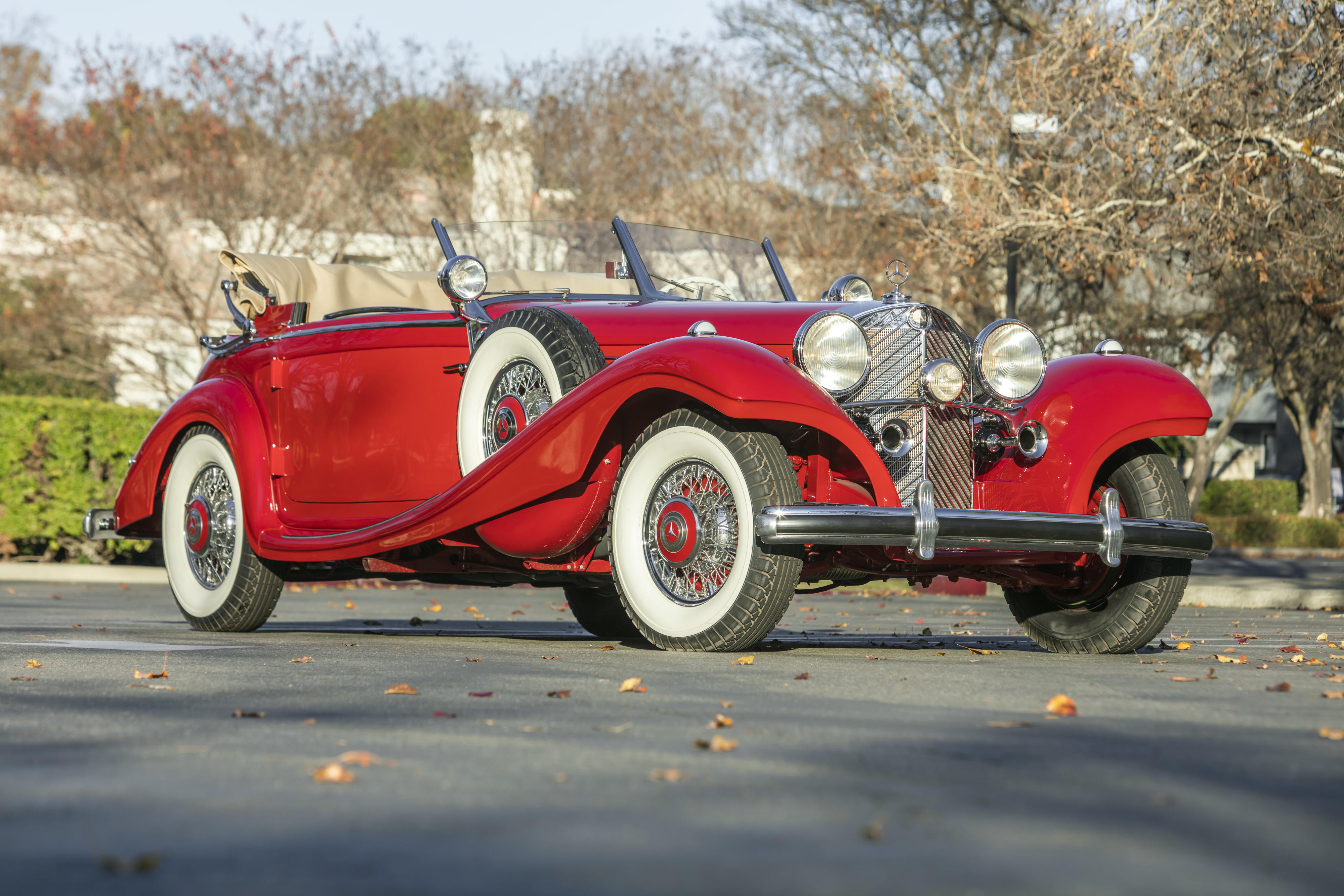
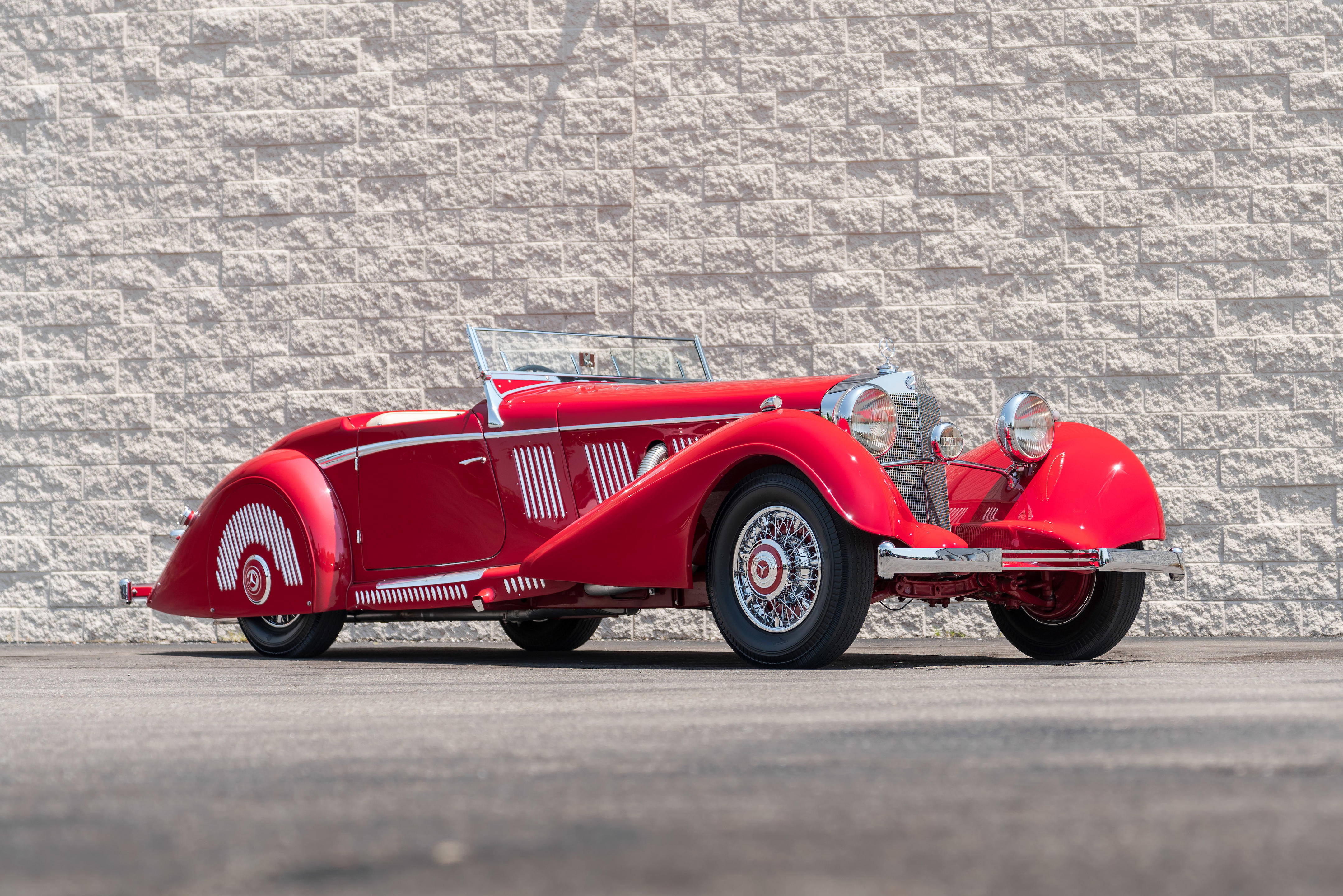
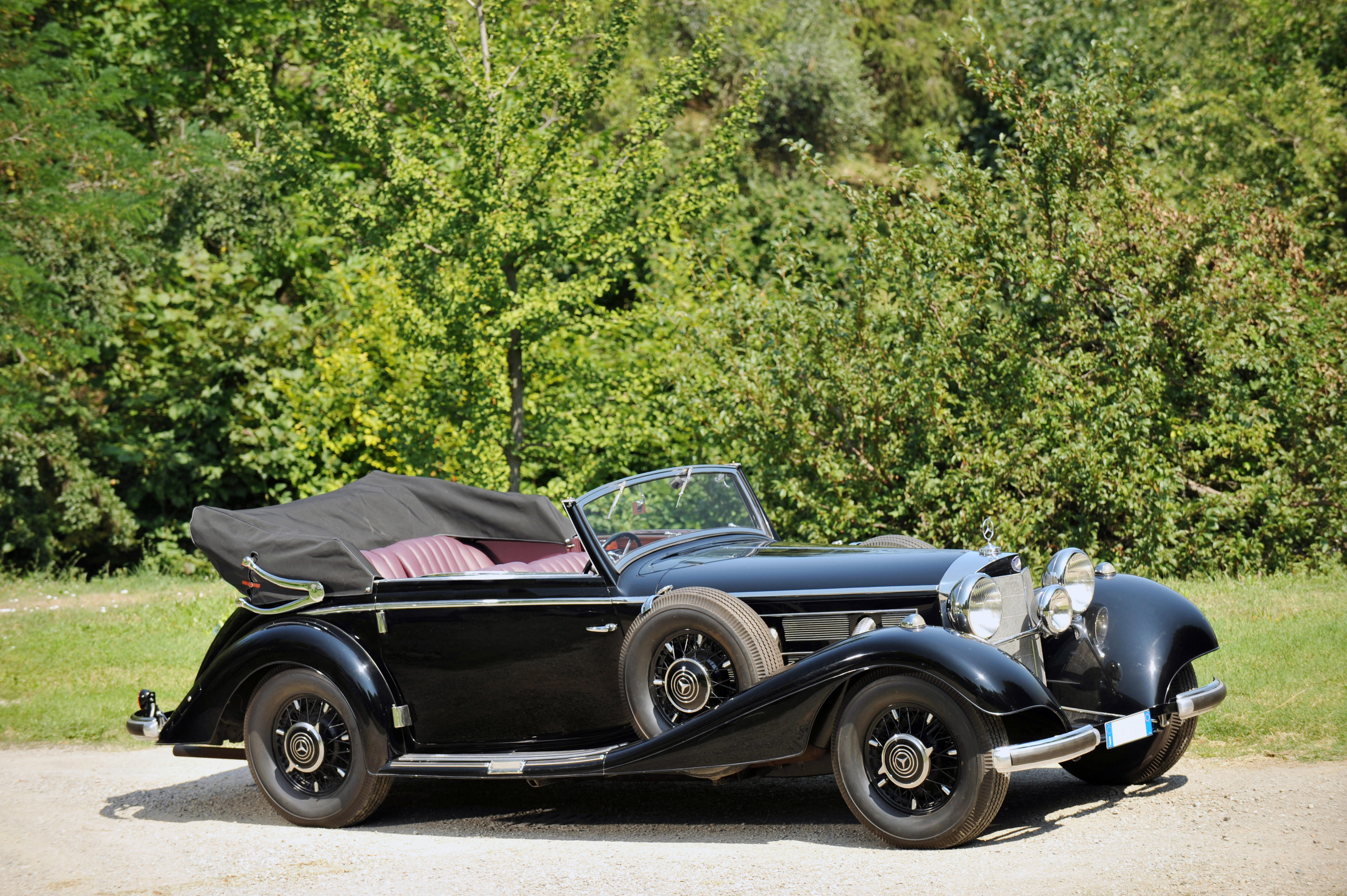

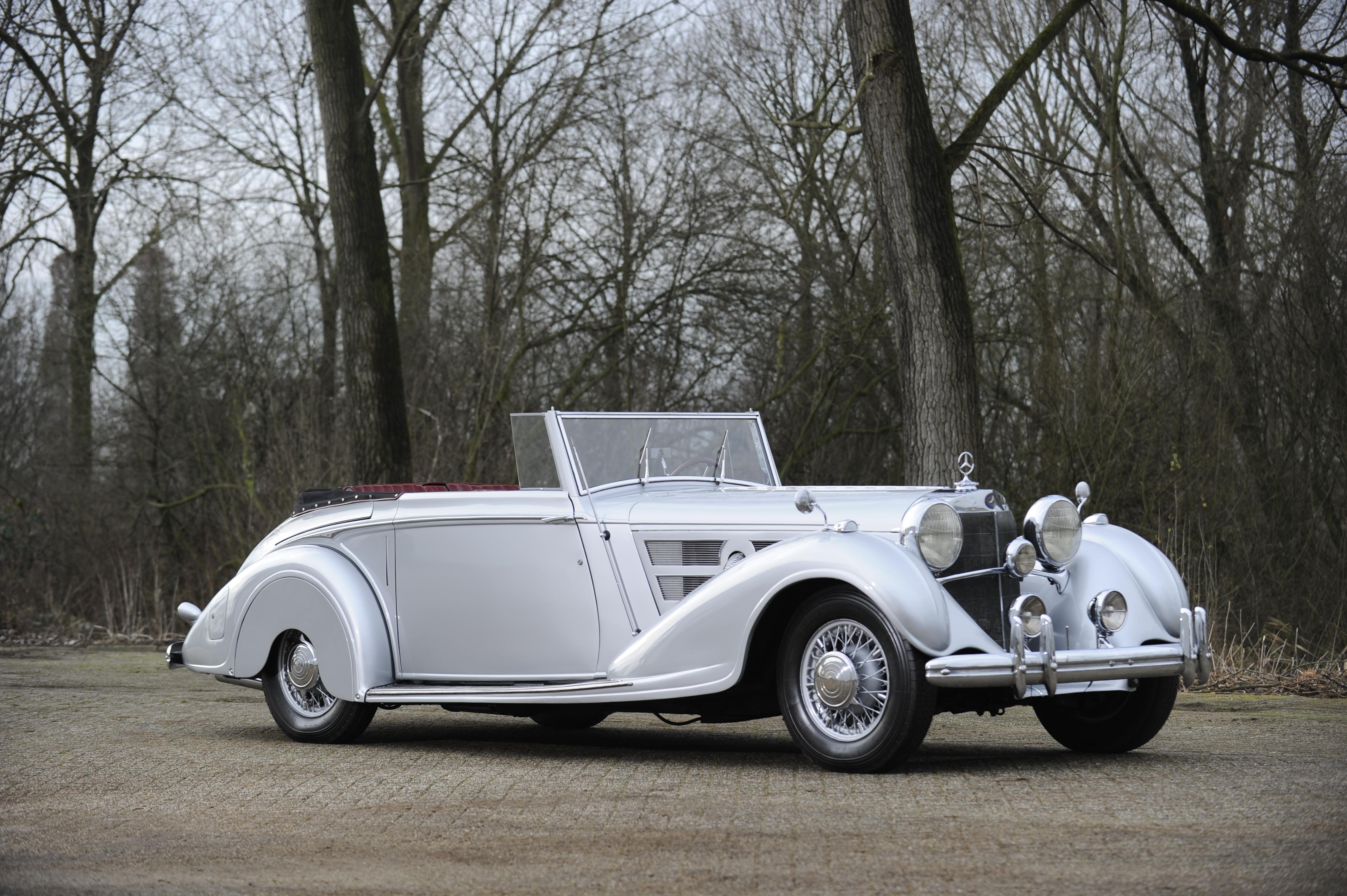
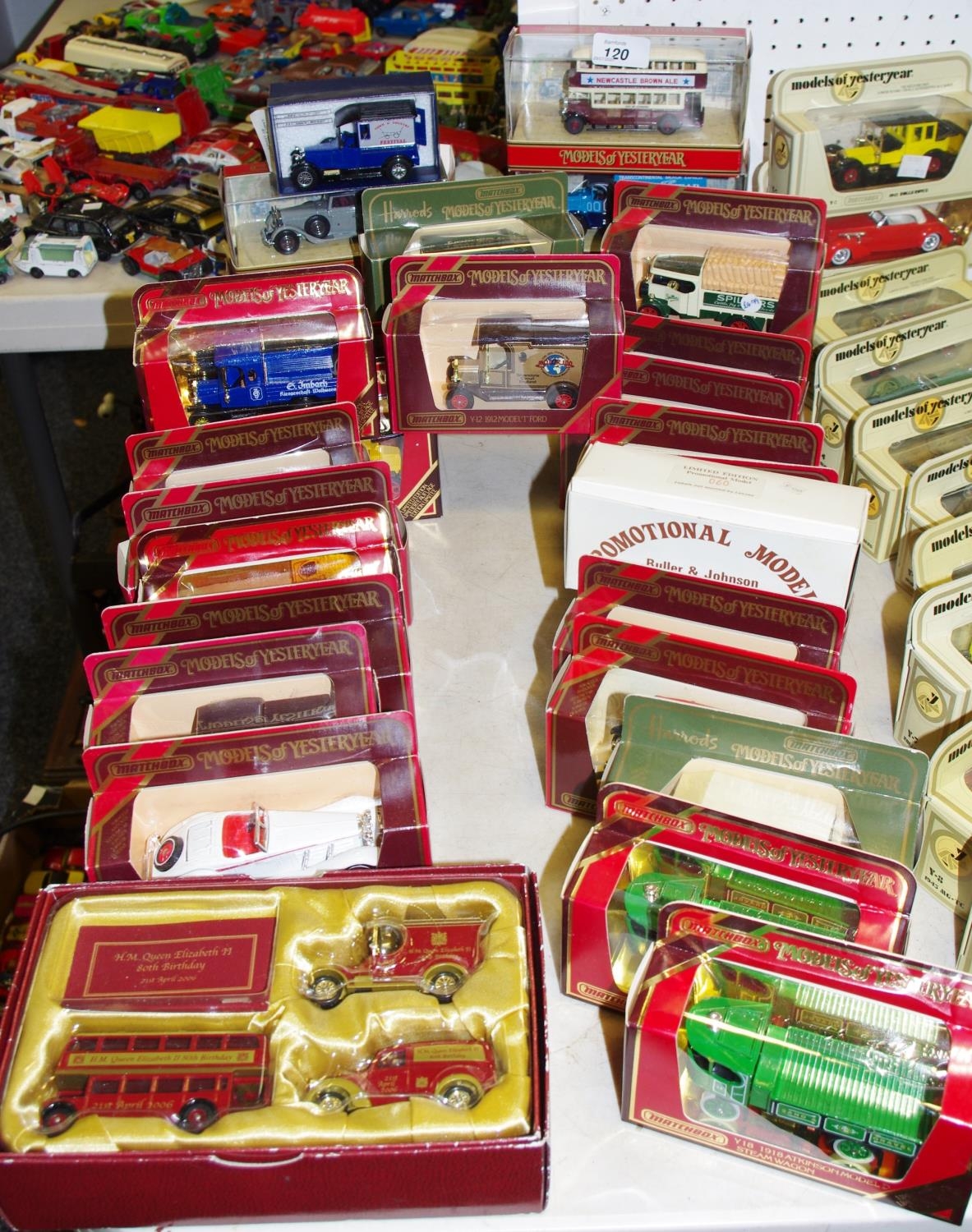
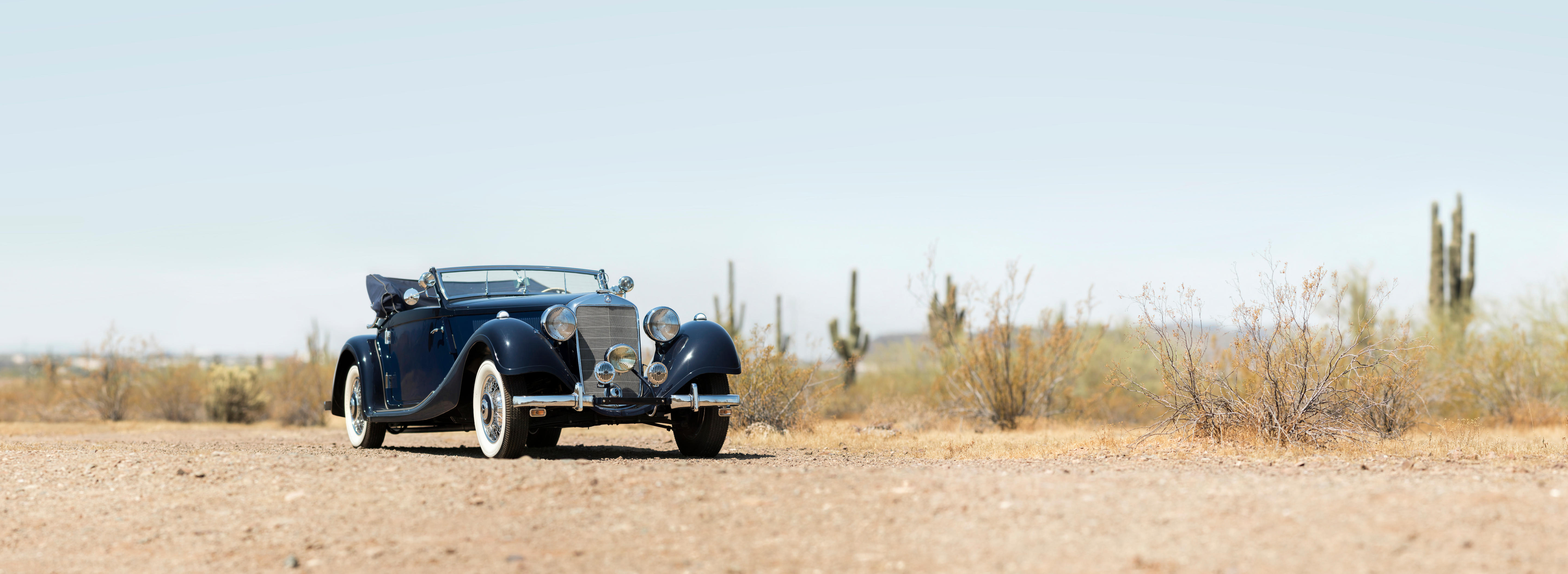
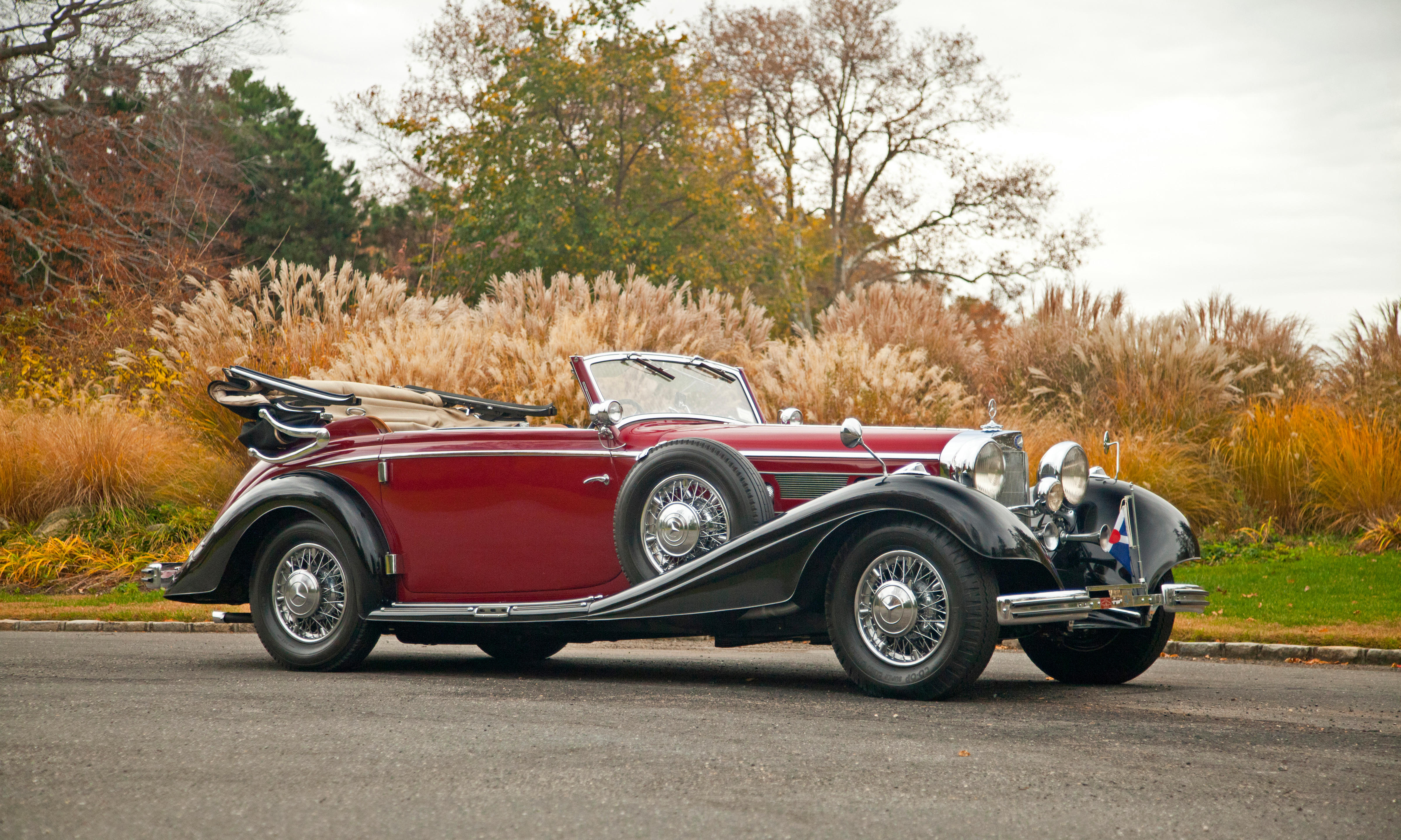

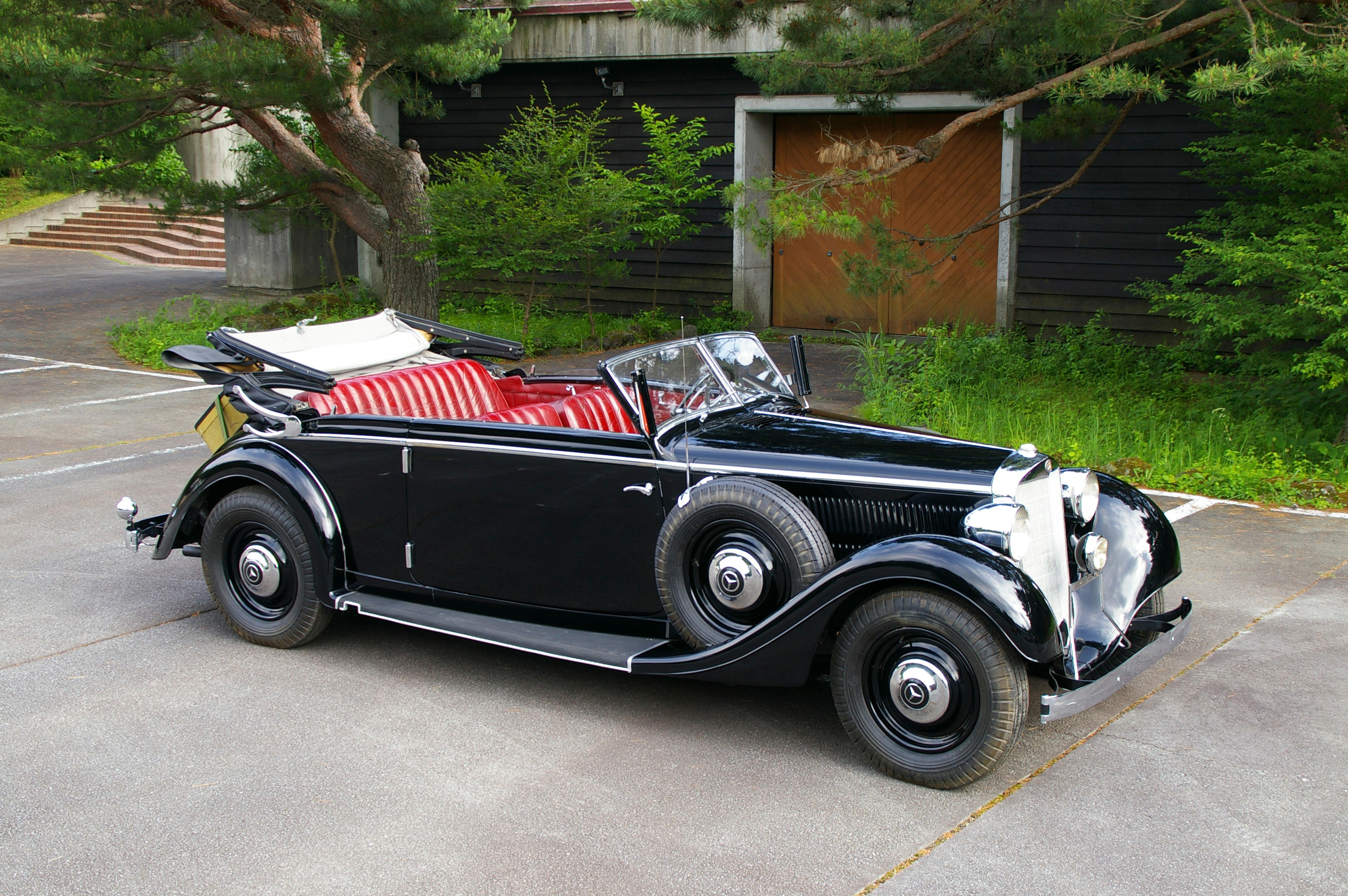

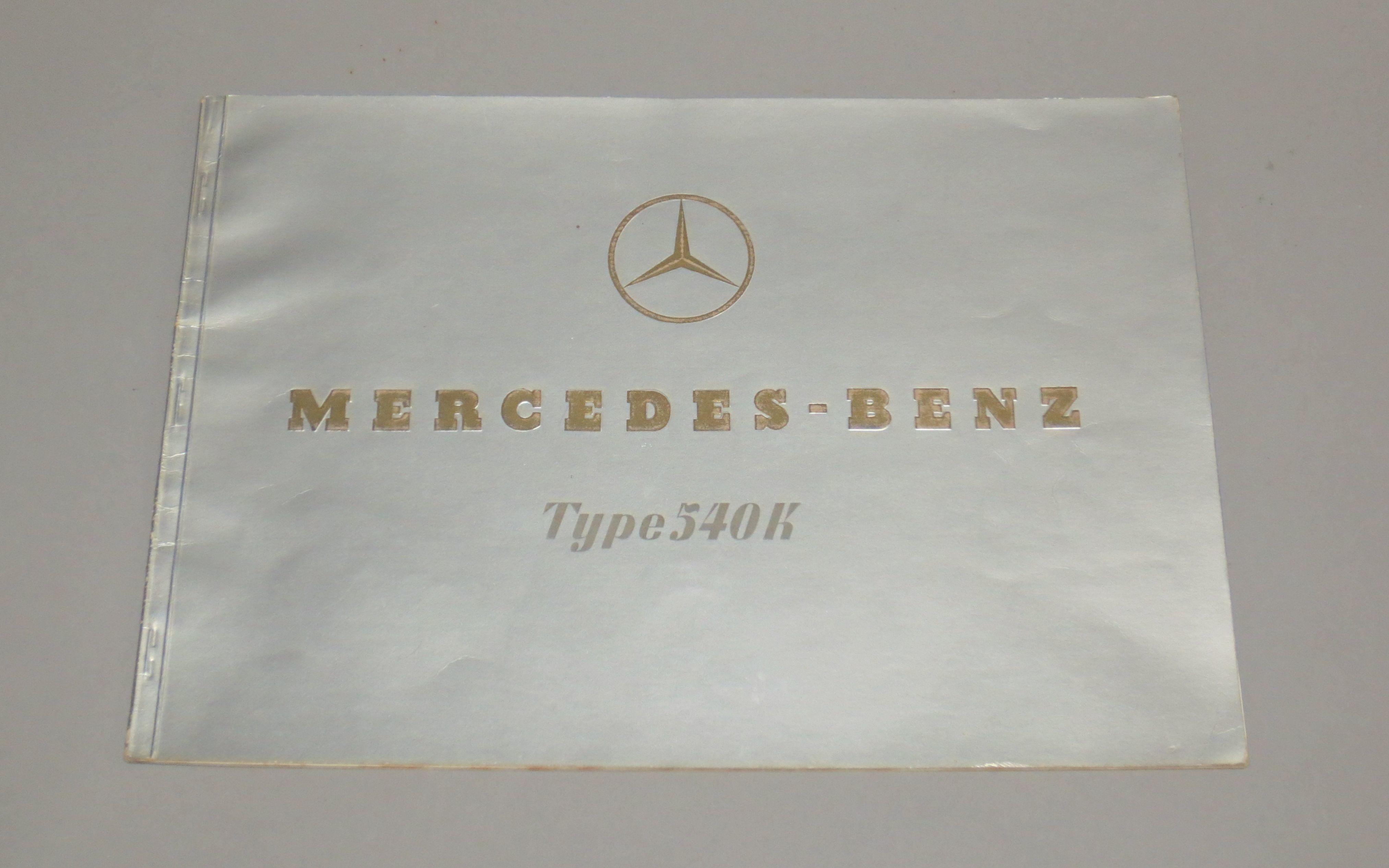



Try LotSearch and its premium features for 7 days - without any costs!
Be notified automatically about new items in upcoming auctions.
Create an alert